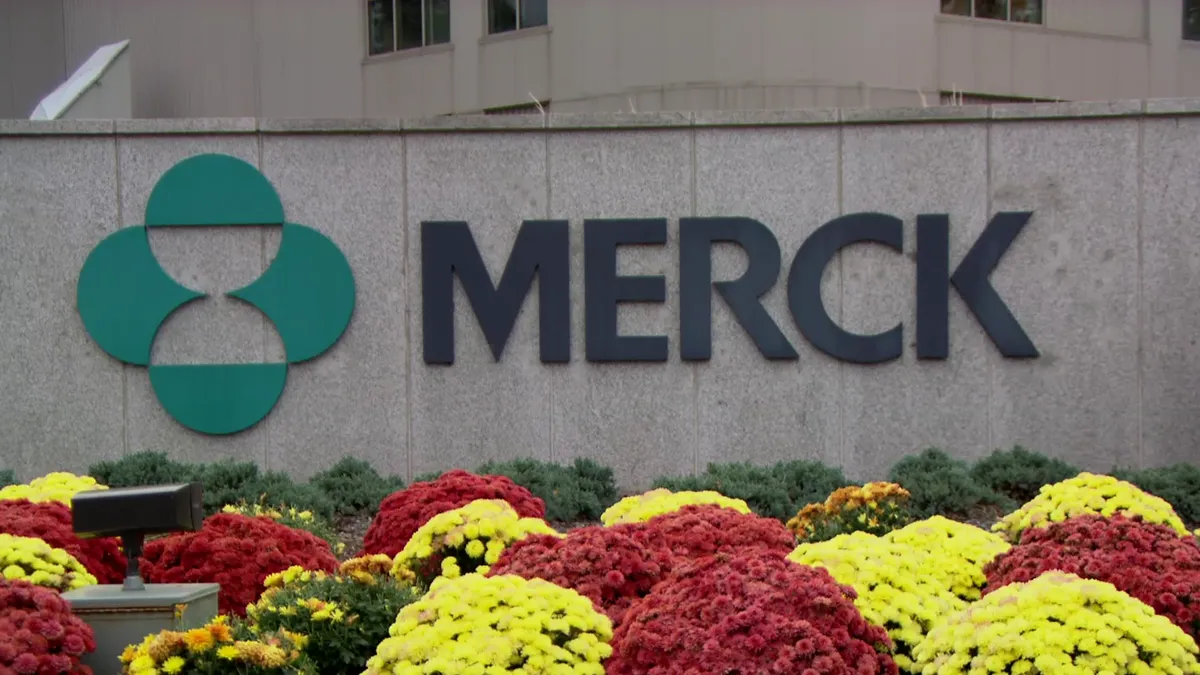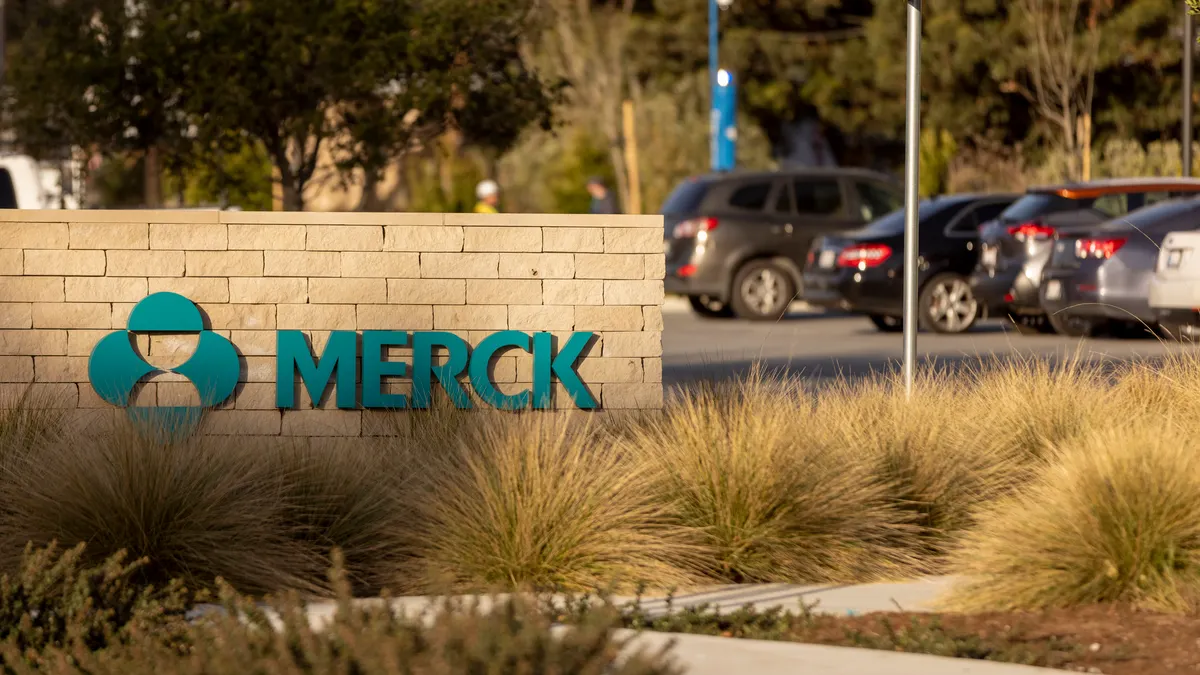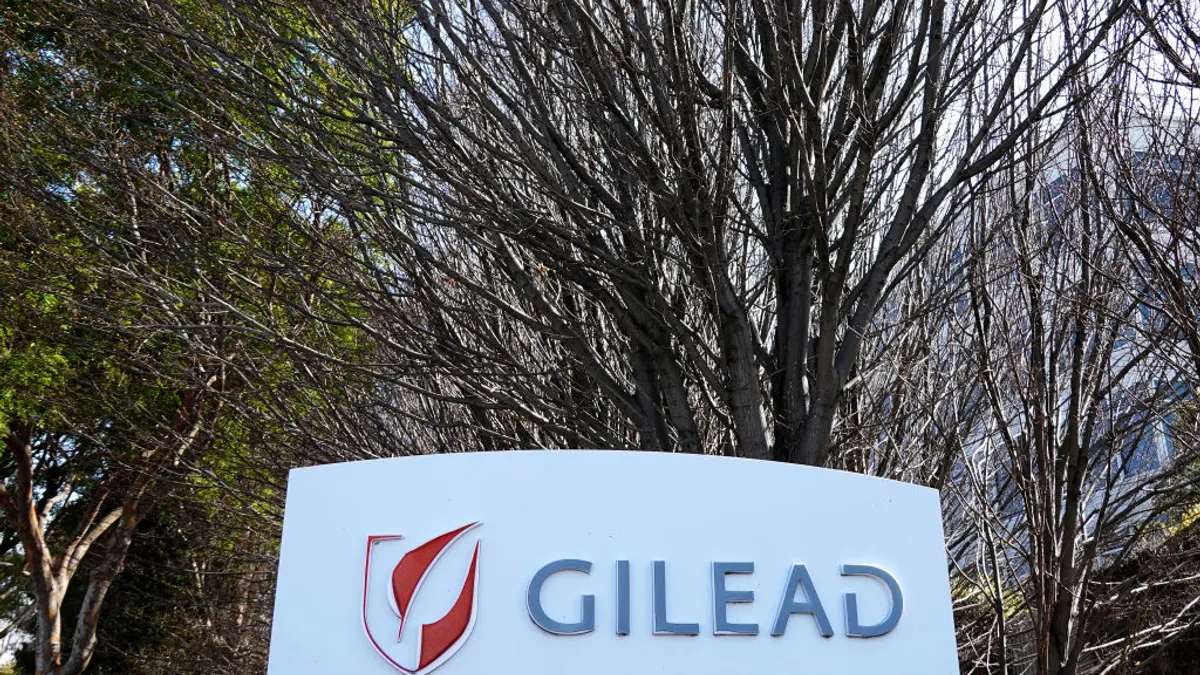Using Digital Media Wisely
Campaigns need to follow objectives, not channels
Experts say creating an experience for patients that allows them to engage with a company beyond its therapies is the most effective use of social media, delivering meaningful information to both the patient and the organization.
UCB currently has three thriving disease awareness communities on Facebook —Epilepsy Advocate, Parkinson’s More than Motion, and Crohns & Me. These communities were established with the goal of using social media to provide value for patients, says Andrea Levin, associate director, public relations and communications, UCB.
“These pages provide a valuable forum for patients to share their stories about life with a severe disease with one another and with UCB," she says. “Rather than simply marketing to them, we are having an important conversation. We believe that the voice of the patient has real value and that their insights will drive our innovation for the future."
At Janssen Biotech, the goal is to provide meaningful content to the physicians and patients while being fully transparent. According to John Haney, VP, immunology marketing, Janssen Biotech, transparency is a necessary ingredient to successful interaction with consumers whether through Facebook, YouTube, Twitter, or independent third-party social networking platforms.
“At Janssen Biotech, we work to integrate social media as much as we are able in all of our disease awareness programs as a core interaction and measurement component," Mr. Haney says. “Through this medium, we have an opportunity to educate and inspire patients and their support networks through sharing patient success stories; to create secure networks for physicians that enable them to share best practices on disease diagnosis and treatment goals; and to address to the best of our ability any concerns or issues that patients and physicians raise about our products."
Wendy White, founder and president of Siren Interactive, points out that the best way for a pharma company to leverage social media depends on the objectives of the company or brand and the level of resources that can be dedicated. The greatest value of social media is the potential to establish and maintain a relationship between a pharma company and patients through an exchange of information. With resources and commitment, this can be done safely and effectively.
“At a minimum, a pharma company can benefit from social media by conducting online listening to identify the priorities and patient unmet needs, behaviors, and potential barriers to treatment, in addition to the terminology patients use to refer to themselves, the disease, and treatments," Ms. White says. “This information can be valuable in the development of marketing initiatives overall."
Brian Loew, cofounder and CEO, Inspire, adds that it is crucial that the industry first recognize that one size does not fit all. While all channels are important, each requires its own approach. Tactics for Twitter are different from tactics for Facebook and different from tactics for online patient communities.
“Companies need to optimize their engagement for each medium," he says. “In particular, addressing like-minded patients in disease-specific patient communities is quite different from addressing broader audiences, such as the ones on Twitter or Facebook."
Kantar Health conducted research that shows that every patient’s needs to be addressed in the way that resonates with him or her. There should be no broad strokes in digital marketing. Targeting stakeholders effectively in digital channels is no different from any other form of marketing in that it requires a strong understanding of local culture and trends, says Graeme Jacombs, managing director — Asia-Pacific, Middle East and Africa, Kantar Health.
“We’ve completed studies around the world — from Asia through to Australia, the European Union and the United States — on how to engage healthcare stakeholders online and found there is no one-size-fits-all solution in terms of digital communication," Mr. Jacombs says.
The surveys found, for example, that 98% of Chinese doctors were accessing the Internet and spending an average of 11 hours online per week. Compared with their Western counterparts, they were also more likely to be “communicators" or “knowledge-seekers" than “functionals," meaning that they can be much more easily engaged via online communications and should have higher involvement levels. Mr. Jacombs says he and his colleagues found similar results in South Korea and India, whereas Australia, a country where one would possibly expect strong social media activity, has a high proportion of “functionals," those who only use the Internet as a tool and are not interested in expressing themselves online (26% vs. the global average of 14%), while “communicators," who like to express themselves online in the same way as they do offline, are relatively few and far between — 10% vs. the global average of 20%.
“Pharma has come a long way, but the industry is still leaving basic opportunities on the table," says Greg Rice, senior VP, strategy, Klick Health. “People are fickle; if they don’t get what they want easily and fast, they leave. After all, other options are only a click away. Most people outside pharma aren’t comparing industry sites against each other, but against the broader digital ecosystem."
Mr. Rice says he expects 2013 to be a transformative year for digital marketing in pharma, with significant growth in CRM, data, IVAs and detailing, mobile, social, analytics, personalization, and non-personal promotion.
The interactive nature of digital content and the ability to easily have versions in different languages without campaign costs rocketing allows for a unique opportunity to understand local stakeholders’ needs in-depth.
“The central question when planning campaigns, whether based on traditional media or social media, is do messages engage key stakeholders?" Mr. Jacombs says. “If they are only going online because they have to, but prefer offline means of communication, then there is little point in running digital campaigns, however cutting-edge they may be."
Prasad Subramani, principal, enterprise analytics practice, Cognizant, recommends that any and all approaches need to put engagement at the center of the strategy.
“More than 70% of life-sciences organizations are starting to engage in social media," he says. “Therefore, life-sciences organizations should have a careful and well-thought out approach on how to engage in different aspects of social media."
Ken Ribotsky, president and CEO of Brandkarma couldn’t agree more.
“Studies tell us patients feel more trustful when pharma companies engage with them," he says. “We need to use social media to create two-way conversations and build patients’ trust and confidence."
Engagement doesn’t occur in a digital vacuum however, and Jay Bolling, president and CEO, Roska Healthcare Advertising, encourages marketers to engage with customers across all channels.
“Customers don’t formulate opinions about brands purely through social media; they do it as a result of a series of exposures across multiple channels," he says. “So, the industry first needs to create a positive experience by engaging customers across every online and offline touch point — while they’re searching for treatment options online, browsing websites, watching television, in the waiting room, or at the pharmacy."
These interactions will translate into positive online social currency and word-of-mouth marketing in the digital ecosystem, without the hassle of running social media tactics through the med/legal process.
According to Erin Byrne, chief engagement officer at ghg, engagement leads to consumer advocacy and that is where the power of digital channels lies. Companies need to go beyond looking at typical metrics, such as Facebook likes and Twitter followers, and create social media strategies that deliver a return on vision.
“Simply counting likes and followers is not enough to assess impact," she says. “It’s too easy for someone to like a page and never visit again, adding no value to the brand."
The true opportunity for brands on social media lies in advocacy, whether the action is as simple as a patient re-tweeting a brand’s website link or as valuable as a physician writing a blog post mentioning the product.
Advocacy can be described as creating a compelling experience that audience members pass on to their personal social networks, ideally with a personal recommendation that strengthens the message’s credibility and impact, Ms. Byrne adds. To assess advocacy accurately, it’s critical to have a model that allows users to identify the universe of potential advocates, predict their possible actions and calculate the impact of their activities on the brand, including providing an ROI number to support social media investments.
“Successful social media strategies identify the best social experiences, not just for engaging target audiences, but also for motivating them to take the actions that will generate results," Ms. Byrne says.
Social media plays a huge role in today’s world of integrated communications, but knowing when and how to leverage these channels is key, says Tom Jones, senior VP, health practice, Makovsky.
“Creating opportunities for nonbranded patient and physician education is perhaps the most exciting way industry can use social media to benefit health outcomes, but more than anything, the industry should be using social media to listen to its stakeholders," he says.
Platforms such as Twitter and Facebook can lend tremendous insight to the industry in terms of getting in-tune with patient concerns. Tapping into social media is also important for opportunistic media relations and messaging: monitoring for trending news and keywords in real time with pre-approved relevant messages, spokespeople, and materials available for use means that companies can make themselves available for expert comment and insight more quickly than ever before.
Companies should not focus their social media efforts solely on product marketing, says Kerry Hilton, CEO of HCB Health. Twitter is an excellent tool to support public relations messaging around big corporate initiatives — not product marketing. Engaging with social media at a higher level will create a halo affect around new launches.
“It’s an excellent tool for premarket conditioning or disease state category awareness that sets the stage for a new product launch," she says.
Another avenue to explore is using apps for reinforcing salesforce efforts.
“Tying a sales app to Salesforce.com or other like data aggregators helps corporations stay accountable and get the best from their people in the field," Ms. Hilton says. “It’s not just about animated graphics; it’s about data capture. The challenge is for pharma to not only gather this information, but also know what to do with it. Those who do will lead the way to success."
Mike Haley, VP, life sciences, Genpact, says leveraging digital channels goes beyond marketing to include the entire life cycle of the drug and across all functions: customer service, branding, marketing, compliance, PR and communications, HR, research and insights, competitive intelligence, medical affairs, new products, and innovation.
“This provides opportunities for the organization to listen, learn, engage, and market across stakeholder groups," he says. “Some examples include gaining consumer insights, which lead to understanding stakeholders needs, drivers, and perceptions; customer service to drive satisfaction and loyalty; and understanding and engaging with key influencers in medical affairs."
And despite the lack of FDA guidance, the industry can still participate safely with unbranded messages, says Faruk Capan, CEO, Intouch Solutions, but first it must be sure there is value add for the patient.
“By avoiding brand mentions, communicators lower their risk but can still drive impact," he says. “The best way for the industry to use social media is not a particular platform or channel. It’s about finding the intersection of what brings value for both the patient and the pharma company. And it’s about a long-term commitment to a conversation instead of a short-term, one-way campaign."
Social media has enabled consumers to communicate with corporations like never before, says Ryan McGuire, research team leader at Cutting Edge Information.
In the pharmaceutical industry, however, communication between companies and patients has been hindered by highly regulated speech.
“Eventually I would like to see social media be the catalyst for putting patients at the center of pharmaceutical corporate strategy again," Mr. McGuire says. “Drug manufacturers can act as a powerful information resource if they listen to patients and respond to their needs."
Channel Surfing
Picking the right digital channel out of the many that can be used to relay a brand’s message relies on objective, target, content, and other circumstances. There’s no silver bullet; each avenue must be examined for its own possibility. And the digital campaign must fit with other marketing components, as it is best used as part of a whole, rather than a stand-alone effort.
Digital channels should not be viewed on an individual level but seen through the scope of how best to meet the business objectives and then integrated with traditional marketing and communication channels in order to best achieve a given goal, says Trish Nettleship, director, social media and influence, UCB.
“Starting with the channel and not the business strategy leads to disparate social activities that have little to no impact," she says. “The opportunity for digital, in any organization, needs to be part of a holistic approach and determined by the business objectives."
Several experts believe that the content is more important in determining which vehicle to use. Stephanie Brown, interactive strategy, FingerPaint Marketing, says all channels are viable for reaching HCPs and patients, but content must come first. Understanding the audience’s information priorities and media preferences, and creating the digital brand assets they will want to consume and share, such as e-books, videos, podcasts, apps, widgets, and surveys, is crucial in the context of social media and mobile.
“Only when we have this knowledge in hand do we examine the channels that will best insinuate that content into the hearts and minds of our customers and provide the kind of brand experience that resonates and differentiates," Ms. Brown says.
It really comes down to relevancy of information and building meaningful content and tailoring it for the delivery platform, and all channels need to work together to deliver, says Ron Scalici, chief innovation officer, Group DCA.
“The mobile channel has achieved critical mass and is the go-to place where many physicians will seek information," he says. “However, there still needs to be promotion around where this information can be found, so there is still a need for the other channels."
Martin O’Brien, partner, healthcare strategy and planning, Rosetta, agrees.
“It isn’t about the winning channel; it’s about the experience orchestrated across channels," he says. “Inside this orchestrated marketing mix there will be channels that have greater roles, and how marketers manage the mix to deliver a personalized experience will determine the potential value. This channel mix will likely look different and require different content and services by customer."
Patients need help managing complicated therapies for complicated diseases, while at the same time physicians have increasingly less time to help them. That’s where apps, if done well, offer pharma companies an opportunity to fill a need, says Abby Mansfield, senior VP, creative director, Topin & Associates.
“The one channel where I see the most potential value is apps," she says. “Apps to educate patients, personalize compliance and adherence programs, and even improve communications between physicians and patients, which ultimately may result in better outcomes and create real value for pharma brands."
Michelle Vitko, senior research analyst, Cutting Edge Information, says due to the far-reaching prevalence of mobile phones, mobile technologies have the most potential to enact wide-scale change.
Mobile technologies will also enable integration into EHR/eRx systems. Meaningful use requirements are progressing to a stage that requires HCPs to interact more with EHR systems, connect with, capture, and share more information.
“The opportunity to deliver better service direct to clinicians via EHR integration, along with the real need to make healthcare information available via electronic and mobile devices, is enormous," says Devin Paullin, executive VP, Physicians Interactive.
Well more than half of all office-based prescribers are sending prescriptions electronically already. Programs that are both patient-centered and HCP-driven have tremendous potential to deliver value every time a drug is prescribed, such as services that help physicians build good will — eCoupons to lower patient medication costs, for example. Providing convenient access to relevant clinical and professional resources, such as eSampling, clinical updates, or product alerts, again within the HCP’s workflow, offers even more potential, he says.
Digital Influencing Advertising Landscape
When it comes to consumer advertising in the 21st century, small is the new big, our experts say. The circumstances in which ad campaigns are planned have changed. Technology has sped up the entire process, and digital channels provide quick response and access to a more targeted audience.
“The days of spending a year or more planning, testing, and then launching a TV ad are over," says Mike Dennelly, managing director, evoke interaction.
“Speed is important — things move too fast, needs change, new technologies may be introduced," he says. “The time that was required to develop campaigns needs to be seriously reduced as we adjust to a new, contemporary way of marketing."
Mr. Dennelly observes two major emerging shifts in pharma marketing. The first being a move from a macro reach to micro targeting; the second is a move from a static brand positioning and push messaging to personalized, value-based marketing. Brands now need to speak to smaller, more specific patient needs and are required to backup what they say. Marketing and media plans need to be able to zero in on smaller patient populations and turn on a dime.
“This is an exciting time; we are reinventing what DTC looks like and I think it is a good thing," he says. “In the end, there will be less waste, more relevance, and a deeper understanding of our customers’ needs, using various channels to convey our messages and reaching our target populations."
While DTC ads still hold value in an overall campaign, for niche, specialty brands with niche budgets, they may not be the right option.
“Knowing that search engines are the first click for most physicians and patients looking to learn more about a specific drug, the shift to more economical Web/digital strategies becomes critical to success," says Andy Pyfer, marketing strategy, FingerPaint.
Mr. Pyfer predicts that advertising strategies of the future will likely be more direct response in nature, containing things such as vanity website URLs and QR codes to move the reader directly from an offline to an online environment.
New technologies are not only enabling greater access to information, they are better capturing the attention and imagination of specialty audiences. Social channels are letting niche brands take part in and influence the online dialogues, while building trust and goodwill in the brand, according to Renée Wills, president, ICC Lowe Trio.
“As mobile communications continue to expand, these stories are now being consumed and shared anytime and anywhere, so cloud technology becomes critical as it allows niche brands a more holistic approach to content organization and the ability to evolve the brand narrative more efficiently," Ms. Wills says.
She acknowledges that creating a memorable pharma campaign that works across multiple channels is a big challenge, but it is also a great opportunity for pharma marketers.
“As healthcare professionals continually evolve the way they seek and acquire information, it’s become a fantastic opportunity for us to create more engaging campaign vehicles based on segmentation, context, and dialogue," she says.
Effective advertising strategies will need to hone in on much narrower slices of the population and reach segments with even great precision. Current stats make it clear the increasingly important role targeted mobile approaches will play in healthcare communications. For example, Lynn O’Connor Vos, CEO, ghg, says 90% of chronic disease sufferers own cell phones, and Bloomberg Businessweek predicts that by 2015, 30% of smartphone users will be counting on mobile health services.
“More than ever, precise targeting will be the key to success," Ms. O’Connor Vos says. “The good news is that our new e-options —from disease-specific online communities and websites to mobile apps and social media —give us a variety of innovative alternatives for targeting exact groups of patients."
Effective campaigns of the future won’t be about choosing one approach, she says, but about mixing multiple channels — both digital and traditional — to achieve the greatest impact. The key will be in finding the right mix of channels, services, and messages to motivate each target segment.
Advertising campaigns will still be about making the key benefits of the brand relevant and persuasive for the customer, but the ability to really relate the patient with the brand will increase at least ten-fold, says Jay Carter, senior VP, director of strategy services, AbelsonTaylor.
“Digital allows people to immerse themselves with the content that they desire to understand," he says. “And I look forward to the day when digital is so pervasive among pharma’s sweet spot — people 55 and older — that we can rely on the medium to drive responsible content."
“It is crucial that the industry recognize that in social media, there is no one-size-fits-all strategy."
Brian Loew / Inspire
“Twitter is an excellent tool for premarket conditioning or disease state category awareness to set the stage for a new product launch."
Kerry Hilton / HCB Health
“The true opportunity for brands on social media lies in advocacy."
Erin Byrne / ghg
“Starting with the channel and not the business strategy leads to disparate social activities that have little to no impact."
Trish Nettleship / UCB
“The best way for the industry to use social media is through a long-term commitment to a conversation instead of a short-term, one-way campaign."
Faruk Capan / Intouch Solutions
“Creating opportunities for non-branded patient and physician education is perhaps the most exciting way the industry can use social media."
Tom Jones / Makovsky
“Each channel mix will likely look different and require different content and services by customers."
Martin O’Brien / Rosetta
“All channels are viable for reaching HCPs and patients, but content must come first."
Stephanie Brown / FingerPaint
“The greatest value of social media is the potential to establish and maintain a relationship between a pharma company and patients."
Wendy White / Siren Interactive
“It really comes down to building meaningful content and tailoring the message for the delivery platform."
Ron Scalici / Group DCA
“Due to the far-reaching prevalence of mobile phones, mobile technologies have the most potential to enact wide-scale change."
Michelle Vitko / Cutting Edge Information
“The central question when planning campaigns — traditional media or social — is whether messages engage key stakeholders."
Graeme Jacombs / Kantar Health
“We believe that the voice of the patient has real value and that their insights will drive our innovation for the future."
Andrea Levin / UCB
“The one channel with the most potential value is mobile apps."
Abby Mansfield / Topin & Associates
“More than 70% of life-sciences organizations are starting to engage in social media."
Prasad Subramani / Cognizant
“The industry needs to use social media to create two-way conversations and build patients’ trust and confidence."
Ken Ribotsky / Brandkarma
Fast Fact – More than 70% of the life-sciences organizations are starting to engage in social media. Source: Cognizant
Use your QR?CODE?READER or go to bit.ly/PV1112-DigitalChannels
Lessons Learned From Digital
Reviewing the successes and missteps of the industry’s digital innovators.
As more and more pharma companies begin to seriously participate in social media, the industry laggers can learn from their successes and their mistakes. Industry innovators such as Sanofi, Pfizer, and J&J have proven it is possible to establish a very active exchange of information with patients via social media and not raise the ire of existing FDA regulations. With practice, the industry is starting to better align its marketing tactics to what e-patients actually want to do. These companies have demonstrated that they are now focusing on how to appropriately engage with patient communities rather than if they should. To accomplish this, they’ve used trusted intermediaries to produce meaningful conversations with patients, and are transparent in doing so.
“They are treating the communities as they want to be treated — as partners," says Nick Colucci, president and CEO of Publicis Healthcare Communications Group.
“Digital leaders demonstrate that developing a solid strategy and investing in social media over the long haul can result in a very engaged patient population that can validate the benefits of the information and resources provided by pharma to patients," says Wendy White, founder and president, Siren Interactive. “I think that too many pharma companies choose not to venture into social media because they don’t recognize the value of relationship marketing based on an exchange of digital information between patients and pharma, or they see it as too risky since the FDA hasn’t issued guidelines specific to social media."
Trailblazers such as Sanofi have proven the industry can engage in social media with a mindful approach, with measured risk, and with or without FDA guidelines, says Faruk Capan, CEO, Intouch Solutions.
“It’s worth noting that even large, traditionally more risk-averse companies have had success with social media, and the industry should learn from their successes and mistakes," he says. “Social isn’t going away."
Tom Jones, senior VP, health practice, Makovsky, also offers up Sanofi as a great example of social media done right by a pharma company.
“With FDA social media guidance still hazy, I think the most important lesson is to let the community identify what would be most helpful to its members, and to listen carefully to their needs," he says.
Janssen embraced the use of social media to engage patients when it launched its Psoriasis 360 Facebook page in 2010. Aimed at raising awareness of the disease and treatment options, this was the first open patient/pharma discussion, making great use of (moderated) commenting as well as Twitter and YouTube, all within the UK Code of Practice guidelines.
In a more recent example, Boehringer Ingelheim is leveraging an unbranded Pinterest page tapping into the visual education trend to teach patients about atrial fibrillation.
According to Graeme Jacombs, Managing Director — Asia-Pacific, Middle East and Africa, Kantar Health, Janssen scored a first that complied with regulatory demands when it developed an Electronic Risk Assessment (ERA) tool to improve the venous thromboembolism prophylaxis in the East of England SHA hospitals. The easy-to-use tool, which replicates NICE CG92 guidelines, securely performs and records patient risk assessments within 15 seconds, then collates the data to produce a report detailing treatment recommendations, Mr. Jacombs says.
Pioneer companies are also exploiting the fact that healthcare professionals have increasingly been integrating mobile technologies into their workflow, particularly in the emerging markets. It also hasn’t escaped their attention that more than 6 billion consumers worldwide are connected via mobile, 4.5 billion of whom are in the emerging markets.
“While many of the earlier consumer healthcare apps were focused on lifestyle, they are now starting to tackle serious health conditions such as heart disease and diabetes, where innovation is key for engagement, particularly in regions like Asia where online adoption is high," Mr. Jacombs says.
For example, Sanofi released iBGStar, a blood glucose meter that attaches to iPhones or iPods for diabetes monitoring. And apps are not just for patients. As part of its Psoriasis 360 campaign, Janssen also developed apps to allow HCPs to assess the severity of psoriasis and treatment options.
In terms of campaigns aimed specifically at the emerging markets, J&J has been using mobile devices to deliver health information for mothers in the developing world, covering topics ranging from intestinal worms to HIV and TB as part of its drive to reduce mortality in women and children by 2015.
These companies demonstrate how digital channels can be used in a compliant and successful way to engage with consumers and build relationships that ultimately result in better health outcomes and increased product awareness.
“Too many companies choose not to venture into social media because they don’t recognize the value of relationship marketing based on an exchange of digital information between patients and pharma."
Wendy White / Siren
“It’s worth noting that even large, traditionally more risk-averse companies have had success."
Faruk Capan / Intouch Solutions
















